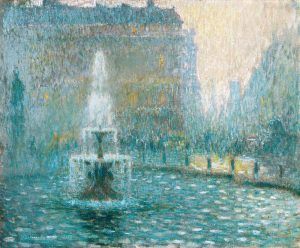Donovan Hohn in Lapham’s Quarterly:

These days I live in southeast Michigan, which is to say I dwell in a watershed of paradox. Here we are, at the edge of the Great Lakes, which together contain 84 percent of North America’s and 20 percent of the world’s accessible freshwater. The Great Lakes are puddles of glacial melt. Rainfall and tributaries contribute only 1 percent of their total volume. Much of the rest is “fossil water,” sequestered from the water cycle since the last ice age. Under a recently issued state permit, the Nestlé corporation, a major purveyor of bottled water, can now draw up to four hundred gallons of Michigan groundwater per minute for just two hundred dollars a year. And yet in Flint, people now regard their faucets with warranted suspicion, and in Detroit, whose water treatment plant would have spared the people of Flint from mass poisoning, the water company has been turning the spigots off, letting their delinquent customers go thirsty or purchase bottled water from Nestlé.
Two years ago, during the federal emergency in Flint, I spent some time in the city following a team of civil engineers conducting an investigation. I watched as contractors excavated a residential street, extracting a service line from under the asphalt. The line—a few dozen yards of copper pipe—was evidence at a crime scene, and the scientists labeled it with forensic care. Looking at it coiled on a sun-dappled lawn, dirt still clinging to the copper, I experienced a feeling that I later recognized as disenchantment. What I couldn’t get over was how small the pipe’s diameter was: three-quarters of an inch. This was it? The source of the everyday magic?
For most of my life, running water had been one of those technologies, like the telephone or electric light, that I took for granted. Where the water came from and where it went when it gurgled down the drain were both mysteries that I’d only rarely wondered about. Living in the age of indoor plumbing is a bit like living beside a stream whose headwaters and mouth are distant rumors. The waterworks of wealthy nations, or at least those of certain zip codes, are a kind of man-made River Lethe. In imperial Rome the aqueduct was a public monument as well as an engineering feat. Buried underground, our own aqueducts invite forgetting. In New York City the subterranean water tunnels constitute, writes David Grann, “a city under the city,” one that few New Yorkers know about, let alone ever see.
More here.
